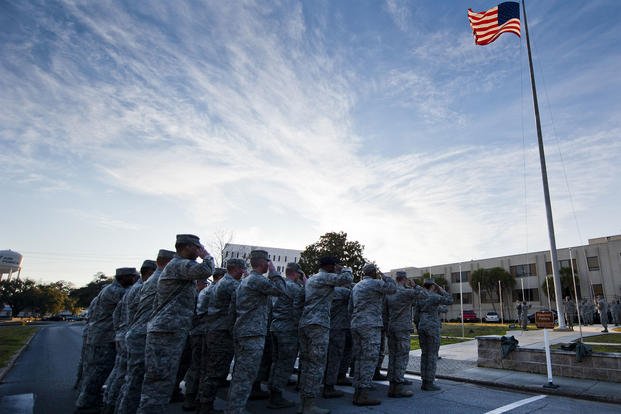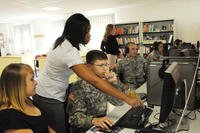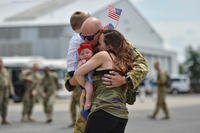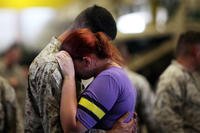Military traditions are important as they can bind loved ones or groups of people together. The military is built on traditions, customs and manners, and as a result its members share a common experience.
As a family member or friend of a service member, it can be valuable to learn about those traditions and customs your loved one participates in as a part of the military community.
Knowing the basics of common military traditions and customs can help you feel more comfortable visiting your service member on an installation or attending a military ceremony.
Take a look at some of the most common military customs for all service branches.
About bugle calls and the national anthem on installation
Bugle calls and the playing of the national anthem are common on military installations. Here's what is helpful to know:
- The two most important calls are for "reveille" and "retreat," when the American flag is raised and lowered daily.
- When a service member hears either of these calls, they will stop whatever they're doing to stand or salute.
- As a civilian, you are also expected to pause and stand quietly until the bugle call is done.
- If you're driving with a service member, see if you can safely stop or pull over so they can pay their respects to the flag.
- You may also hear the national anthem played everywhere on base, from elevators to commissaries.
- You can expect to stand respectfully whenever it plays, whether part of a ceremony, or even during opening movie trailers at base theaters.
How you can help your service member respect the chain of command
You may hear your service member talk about their "chain of command" or a "commanding officer." The chain of command is how each service branch can direct huge numbers of people for mission-critical work. This is done through commanding officers.
The chain of command is a hallowed tradition in the military. It involves more direct oversight and responsibility than most workplace supervisor structures. For example, commanding officers oversee many parts of their unit's daily tasks and performance to ensure personnel can rapidly respond to new or changing orders to support their military mission.
The chain of command is reinforced by saluting higher-ranked officers. Here are some things to keep in mind:
- Service members will salute officers in their chain of command. Enlisted members also salute warrant and commissioned officers, who will return the salute.
- Salutes are given with the right hand. So, you could try to stand on your service member's left side so they can keep their right hand free to salute.
- As a civilian, you are not expected to salute. But, be prepared to acknowledge someone else's greeting if they salute your service member.
- Military uniforms will show the rank of a service member you are interacting with or see in passing.
What you should know about formal uniform etiquette
Service members are expected to behave in certain ways whenever they wear uniforms. As a family member or friend, you can help them keep their uniform code.
- Do not expect or offer public displays of affection whenever a service member is in uniform. However, brief kisses and hugs are acceptable during deployments and homecomings.
- Eating, drinking, using a cellphone and smoking while walking is generally banned in uniform.
- Formal uniform hats, or "covers," must be worn outside and carried indoors. Service members don't salute while "uncovered" -- with their hat off.
- Offer to hold black umbrellas if it's raining. Not all branches allow service members to carry umbrellas while in uniform.
What to expect at formal military occasions: Graduations, homecomings and balls
At some point during your service member's career, you may be invited to a formal military event. Each branch has different customs and ceremonies, but there are some common expectations between the services.
- Military graduation: Your service member's graduation ceremonies will usually include a guest speaker and invocation ceremony. Like high school or college graduations, military graduates are often recognized as they walk across the stage. If attending a graduation for non-commissioned officer training, you may hear a recital of the NCO Creed. Graduation from basic training is also your service member's first occasion in formal dress uniform.
- Deployment homecomings: Ceremonies for service members returning from deployment can be relaxed or formal occasions before they're released to family and friends. Each branch has their own homecoming traditions. For example, when a Navy ship returns to port, new dads whose children were born while they were deployed traditionally disembark first. Ask your service member if there is something planned for their homecoming.
- Military balls: These are formal, black-tie affairs, with dress uniform required for attending service members. Guests or dates are expected to dress accordingly, wearing floor-length gowns or suits as appropriate. A sit-down dinner may be served, with speeches and presentations throughout, as well as dancing and conversation.
Keep Up with the Ins and Outs of Military Life
For the latest military news and tips on military family benefits and more, sign up for a free Military.com membership and have the information you need delivered directly to your inbox.



























